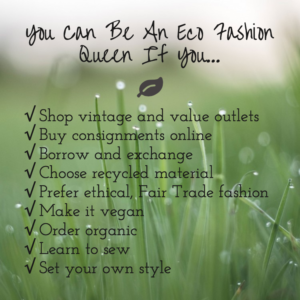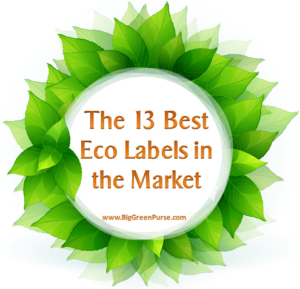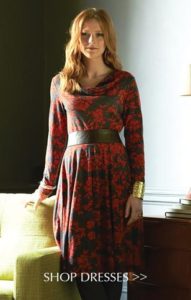If we want our apparel to be “eco,” most of us start by buying vintage or second-hand, swapping with friends or family, or dragging out the sewing machine to pull together a pattern or alter an old style into something more trendy. We recycle our clothes in a lot of creative ways, too. But even with all that, we may still need to buy new at some point.
When that time comes, what should you look for? We’ve previously tackled the problems with buying apparel made from bamboo, even if it claims to be “eco friendly.” Organic cotton is among the most reliable options to choose; it’s gotten pretty easy to find socks, t-shirts, maybe even some lingerie made from this “green” fiber. But beyond that, the choices are pretty slim, especially if we still do most of our clothes shopping at the mall.
So if bamboo is out and organic cotton is hard to find, what does that leave? We’ll attempt to answer that question and more with this primer on how to shop for eco-friendly clothes.
Here’s Part #1 – Read the label.
When shopping for “greener” clothes, ignore words like “environmentally friendly,” “nature safe,” and “eco.” Instead, look for third-party certifications for claims that mean the shirt or shoes or pajamas were predominantly made from sustainable fibers by adults, not kids, in a Fair Trade process that minimizes its environmental impact. The following companies certify companies that meet these criteria.
GOTS – The Global Organic Textile Standard
The raw materials that GOTS certifies must first be approved organic by a trusted company such as The Institute for Marketecology.GOTS will then review every step in the manufacturing process, from the harvesting of raw materials right through to proper product labeling. GOTS pays special attention to the dyeing process, as this can be extremely harmful to the health of workers as well as the environment. GOTS will not certify any manufacturer that uses any heavy metals, formaldehyde, GMO enzymes or carcinogenics.
GOTS is also very strict about environmental discharge during production and chemical residues in the finished product. GOTS will grade a product as an “Organic Textile” if it has at least a 95% organic origin. They will grade a product as “Textile containing organic fibers” if it has at least 70% organic origin. Several companies partner with GOTS and share their standards, including ICEA, based in Italy, ECOCERT, based in France , the Organic Trade Association in the U.S., Soil Association, based in the UK , and the Japan Organic Cotton Association.
Global Enfant sells baby and children s products that are both COTS and SA8000 (see below) certified.
Recycle a Tee also uses GOTS certified materials.
Oeko-Tex is also recognized globally as a reliable and independent 3rd party eco-certification. The company will test and if applicable, certify textile raw materials, as well as intermediate and end products at all stages of production. Oeko-Tex will allocate a product into one of four classes based on how much contact it has with skin. Products intended for babies, for example, must meet more stringent requirements than those woven into a woman’s blouse.
Eden Home and Green Earth Bamboo both offer Oeko-Tex-certified clothing for the whole family.
SA8000
If a company states that it is SA8000-certified, it means it has passed a globally recognized social accountability standard for fair and humane working conditions. Specifically, products must meet the following criteria to be considered for SA8000 certification: No Child Labor, No Forced Labor, Proper Health and Safety, Workers’ Freedom of Association and Right to Collective Bargaining, No Discrimination, Reasonable Working Hours, and Fair Wages.
Fair Trade Certified™ You may already be purchasing Fair Trade coffee or chocolate. This certifying group now also certifying apparel and linens. If you are buying apparel that has been Fair Trade Certified, you can feel good about your purchase knowing that you are helping fight poverty and develop sustainability for some of the world’s most indigent cotton farmers and factory workers.
In the US, HAE NOW and Tompkins Point Apparel are among a handful of companies that have been Fair Trade Certified.
Read more about sustainable and eco-friendly clothing here. And check back soon for Parts 2 and 3 of our eco-friendly clothing series.















1 thought on “How to Shop for Eco-Friendly Clothes – Part 1: Read the Label”
Thank you for the information. I will follow these tips. Let’s all be eco-friendly in buying our clothes. Let’s save Mother Earth.
Comments are closed.